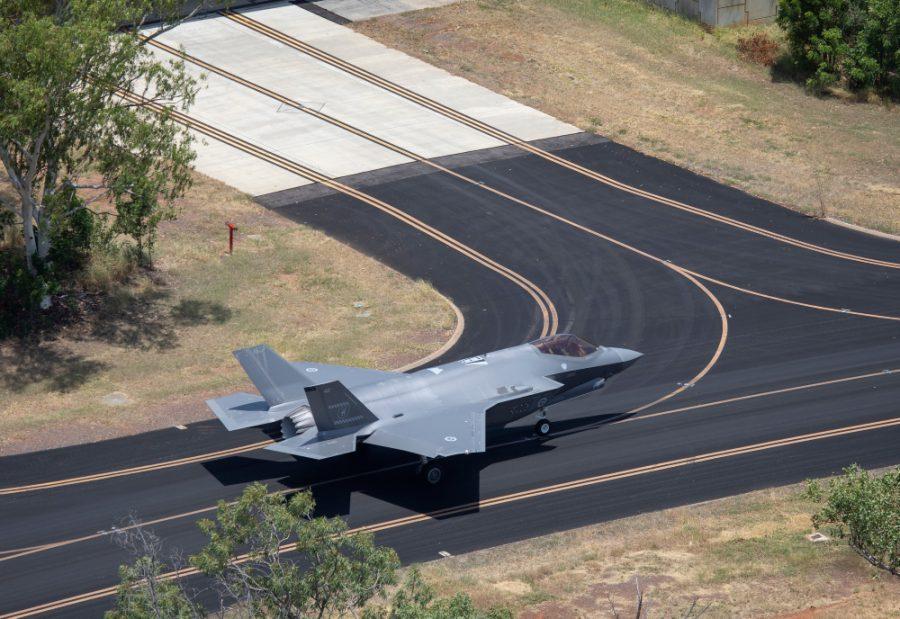
During World War II, hushed voices in Nazi-occupied Europe shared the words, ‘The Americans are coming!’ At the time, it was a message of hope among many Europeans who felt utterly helpless. February marked the 80th anniversary of the first Japanese bombing of Darwin Harbour in that same war, and both the Americans and Japanese are again coming, but under very different circumstances. Today, similar words are freely spoken in northern Australia whenever discussions of the economy arise.
Everyone knows that the American military is already in Darwin. There’s plenty of Chinese (Darwin Port) and Japanese (Inpex) foreign investment as well. However, this time around, ‘the Americans are coming’ is a reference to what the US Department of Defense is spending, or might be willing to spend, on construction and infrastructure in Australia’s north.
Of course, for some, the phrase still opens up a discussion of how many more American armed forces personnel will become part-time denizens of the Northern Territory.
Territorians understand that the US considers northern Australia to be strategically important, and they are rolling out the red carpet for economic and security reasons.
Everyone from Darwin to Canberra is just waiting to see what the Americans, among others, are going build, do and spend in northern Australia.
The US has already been busy investing in Royal Australian Air Force Base Tindal, and more spending has been promised.
But it’s projects like the construction of a $270 million fuel storage facility in Darwin to support US defence operations in the region that are exciting many. This new 300-megalitre facility will be owned and operated by Florida company Crowley Government Services. The project addresses a problem that has long plagued the Australian Defence Force in northern Australia: liquid fuel supply. And it’s not wasting any time, with stakeholders in Washington, Canberra and Darwin working together to deliver the project within two years.
Historically, the US has been reluctant to invest outside its sovereign territory. The fuel storage and RAAF Base Tindal decisions illustrate that the US government is willing to invest in infrastructure in Australia. Or, more specifically, that it will pay to resolve problems that neither market forces nor Australian policies have fixed.
It’s hard not to conclude that the fuel-storage investment was a sign of a lack of US confidence in the Australian government getting strategic liquid-fuel reserves right in northern Australia.
The US isn’t the only one investing in Darwin. Japanese company Inpex has established the Ichthys liquefied natural gas project to guarantee energy security for Japan. And it now looks set to spend $868 million to build one of the world’s most extensive carbon-capture facilities in Australia. It also seems likely that we’ll see the Japan Self-Defense Forces training more often and in more significant numbers in northern Australia.
Collectively, these developments are excellent news for the economy of the Northern Territory. It’s also a great news story for Defence, which will have access to desperately needed infrastructure in times of crisis.
While foreign investment and its second- and third-order effects are welcomed in northern Australia, there’s a question here about why the Australian defence organisation isn’t addressing some of these issues itself. Sure, it might save some money, but policymakers need to consider whether so much decision-making power over the future of northern Australia should be in foreign hands. Even if they’re the hands of allies that share the same values.
One of my significant objections to the Darwin Port lease arrangements has always been that Australians should be the ones making decisions about the future of our northernmost deep-water port.
US investment in defence facilities in northern Australia is critical because infrastructure development will have mutual benefits. It also ensures the kind of closer military ties that are important during periods of strategic uncertainty.
Nevertheless, Australia shouldn’t be passively and patiently sitting back waiting to see when, where and how the Americans will arrive. Nor should Defence or any other arm of government see US investment as a means to reduce its own investments in infrastructure and local industry. If anything, American investments should be viewed as an opportunity for the Australian government to think bigger.
Could the federal government have contributed to the US fuel project and built a fuel line between RAAF Darwin and Tindal or expanded the overall size of the storage? Alternatively, if the Americans solve a fuel problem in Darwin, could the money saved be used to build additional infrastructure? Could it be used to make all-new investments in the northern Australian economy to ensure that Defence has the kind of scalable industry base it needs?
Unfortunately, Defence still hasn’t been able to clearly articulate the role of the north in Australia’s defence and strategic policy. It’s still unclear how the government’s 2020 defence strategic update changed (or didn’t change) Defence’s thinking about the north.
Defence has provided even less clarity on its intentions in its communications with state and territory governments and the private sector. In the meantime, they haven’t waited around for Defence to tell them what they should be doing in the north. Instead, they’re getting on with the job. They’re trying to maximise the benefits of these foreign investments and their own in the hope that Defence will join them.
What should be clear for Canberra is that Australia’s various governments should be deciding what infrastructure is needed and where they would like the Americans, and maybe one day soon the Japanese, to be.